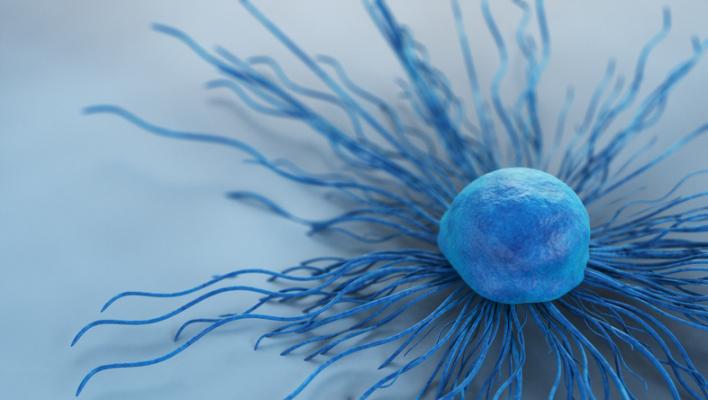
Getty Images
May 19, 2021 — A new study finds that brachytherapy, a common procedure that delivers radiation directly to cancer cells, may continue safely, potentially without delay or antibiotics, in cervical cancer patients following uterine perforation.
According to the World Health Organization, cervical cancer is the fourth most common cancer in women. Treatment for cervical cancer often involves brachytherapy combined with daily radiation therapy. Brachytherapy delivers radiation directly to cancer cells through a tube placed within the uterus.
"At times this tube can pierce the uterus and lead to a perforation," said William Small, Jr., M.D., lead study author and professor and chair of radiation oncology at Loyola Medicine and Loyola University Chicago Stritch School of Medicine. "Many clinicians will not proceed with the treatment when a perforation occurs. This can lead to delays in therapy that may increase the recurrence risk and potentially lead to worse survival rates."
In the new study, "Uterine perforation during brachytherapy for cervical cancer: Complications, outcomes, and best practices for forward treatment planning and management," researchers sought to determine the incidence of uterine perforations, review associated complications, and propose guidelines for the management of perforations after brachytherapy.
Researchers conducted a retrospective review of 123 patients with cervical cancer who received single or multiple high-dose therapy implants between April 2006 and May 2017 at Loyola University Medical Center. Patient computed tomography (CT) and magnetic resononance imaging (MRI) images were reviewed to identify uterine perforation caused by the tandem, the tube placed within the uterus to deliver radiation. Acute and long-term complications during and after treatment were scored using the National Cancer Institute's Common Terminology Criteria for Adverse Events Version 4.0.
Perforations were observed in 22 patients (17.9%) and 31 (6.4%) of the 482 total implants. Three patients developed acute infectious complications; two of these patients had mild urinary tract infections, which resolved without complications or treatment delays. The third patient had a complex perforation, received antibiotics and required a one-week treatment delay. Of the different categories of adverse events, only the rate of acute infectious complications among those with perforations (13.6%) versus those without perforations (3%) was significant.
"Our study notes that when perforation occurs, treatment can proceed without delay, potentially improving survival," said Dr. Small, who is also director of Loyola's Cardinal Bernardin Cancer Center. Treatment also may proceed without prophylactic antibiotics.
"If confirmed with additional data, the findings could lead to a new standard of care with the potential to save significant lives around the world," said Dr. Small.
The study first appeared online March 17, 2021 in the journal Brachytherapy.
For more information: www.


 April 21, 2025
April 21, 2025 








